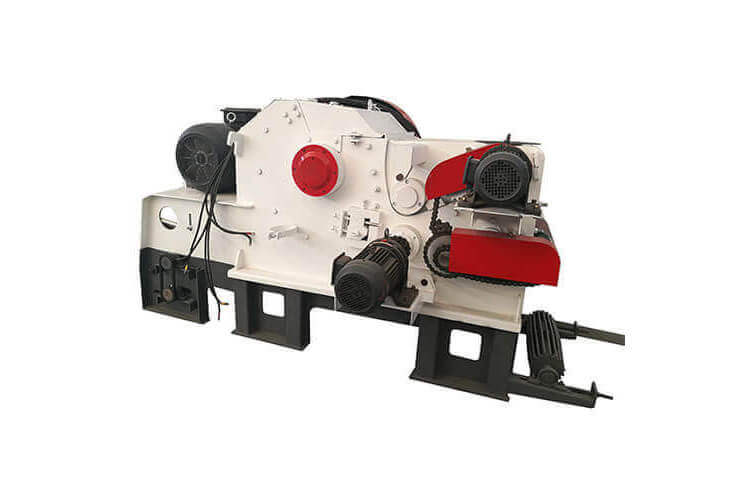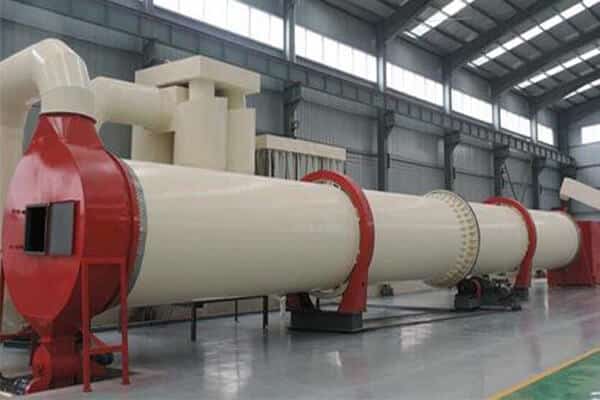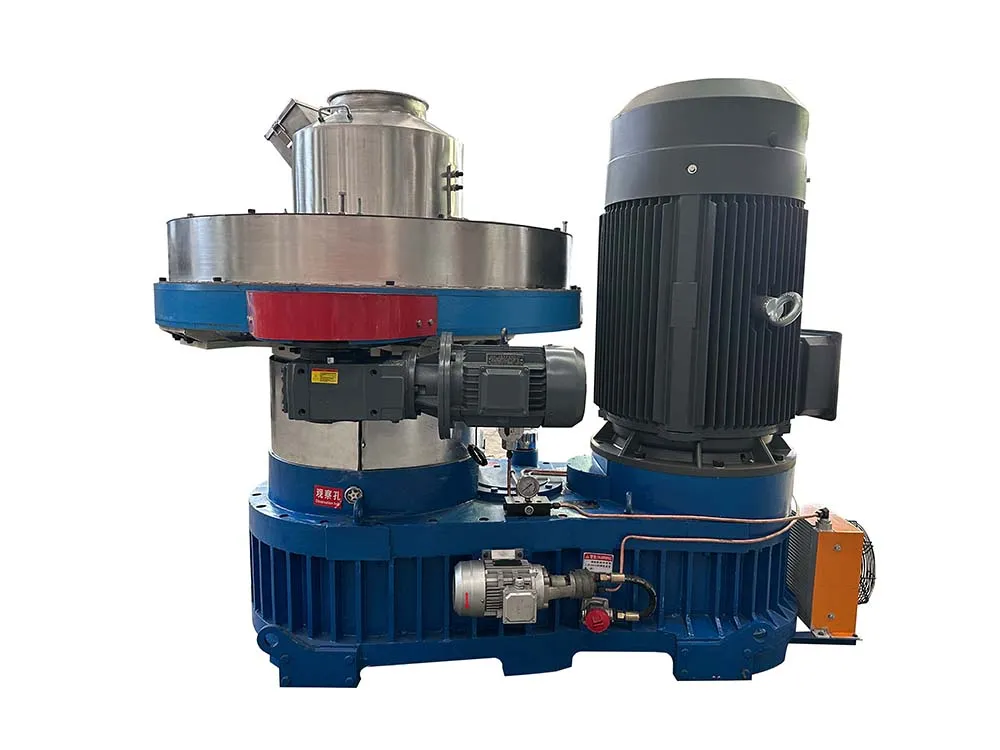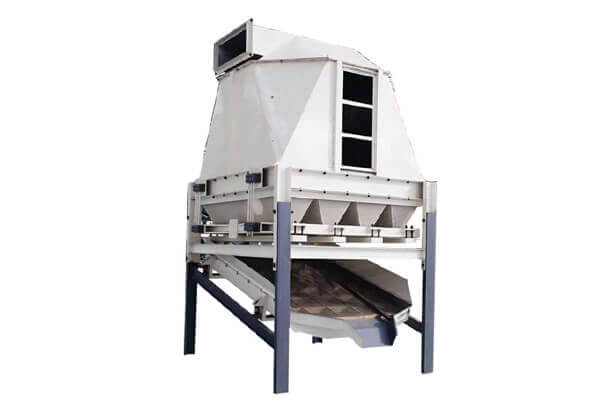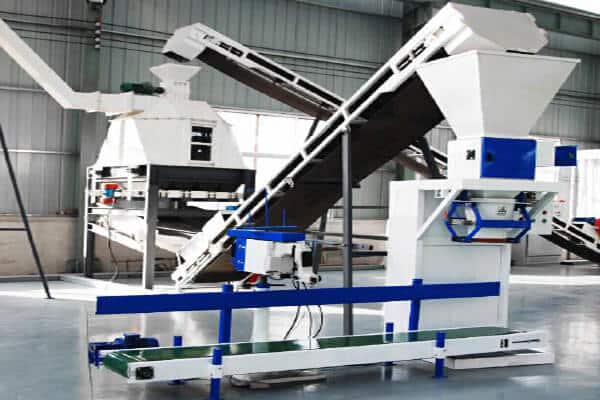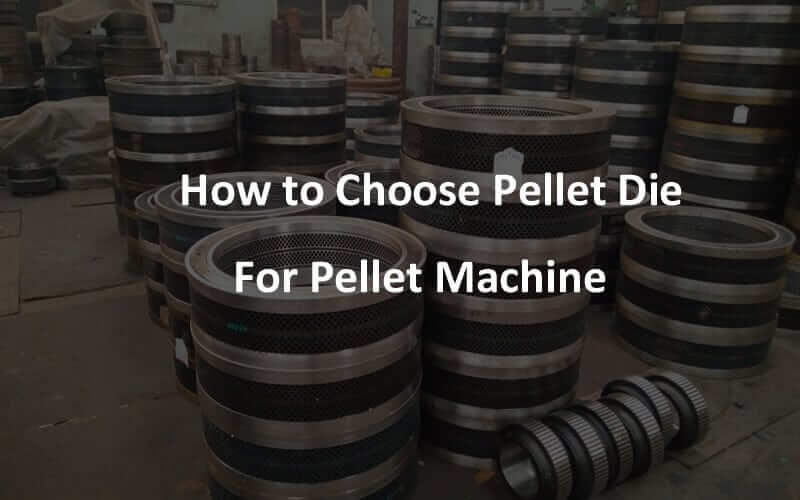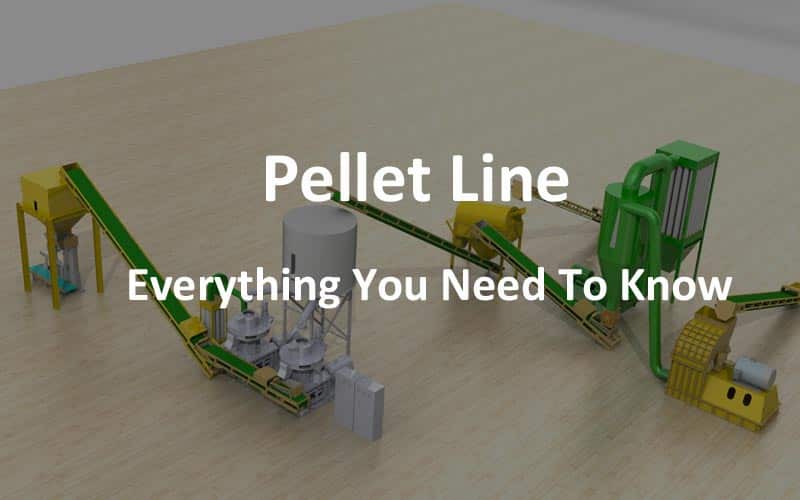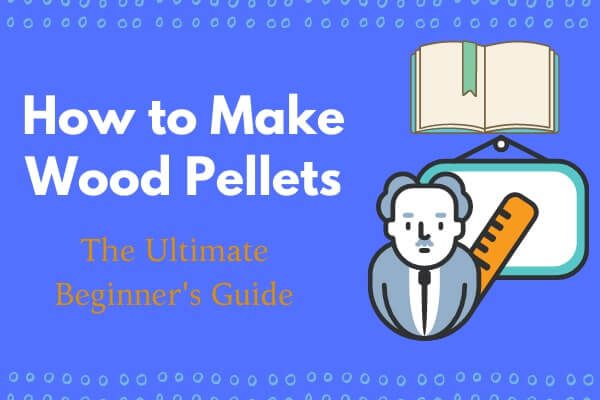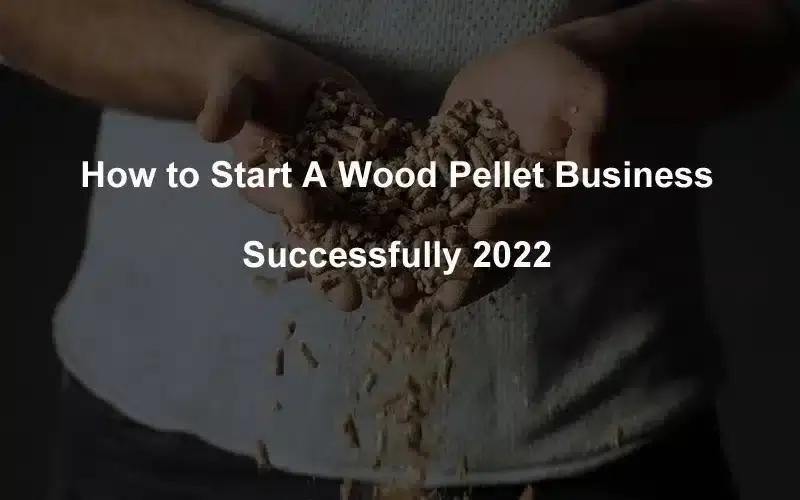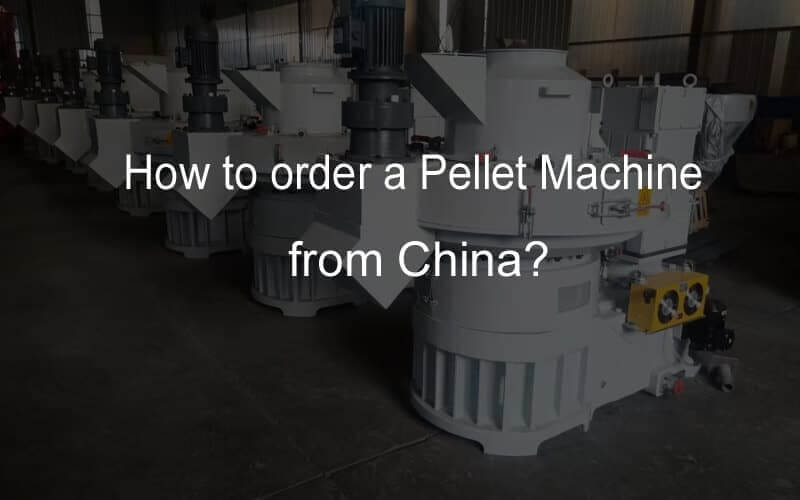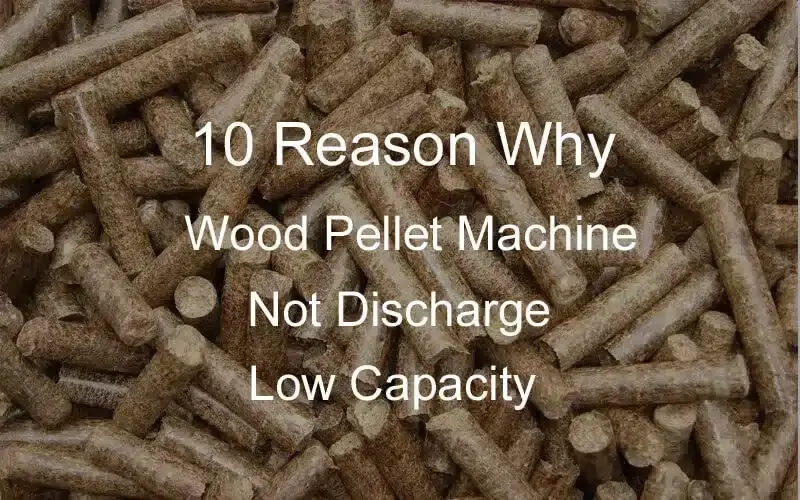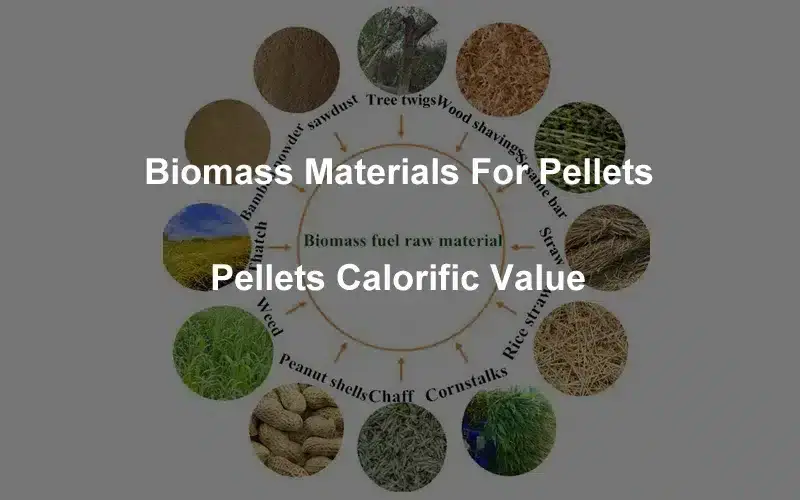Proveedor profesional de soluciones de línea de producción de pellets desde 2004
Línea de producción de pellets - Guía para principiantes
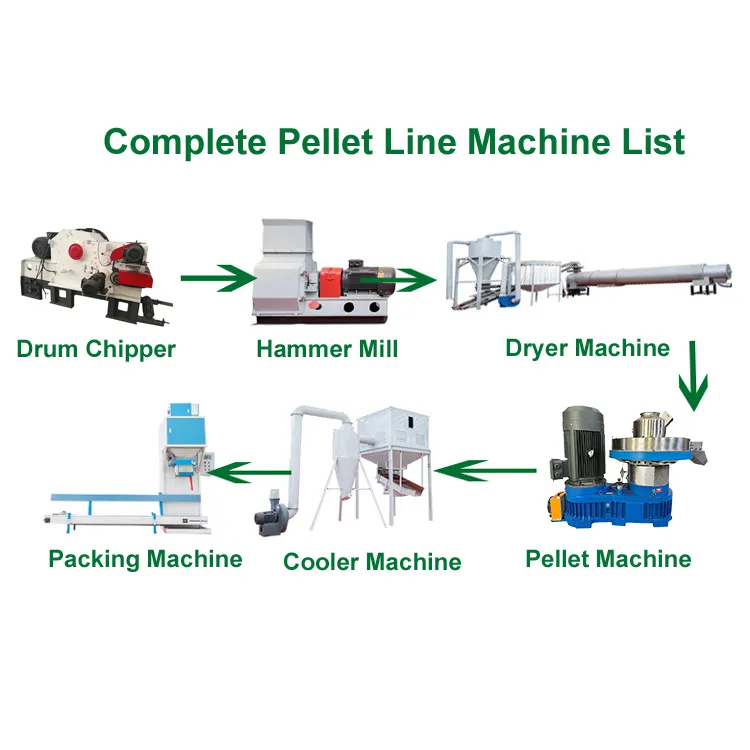
¿Desea ampliar su producción de pellets de madera a pequeña escala a una escala más comercial? Si ya dispone de una pequeña línea de producción de pellets casera o improvisada en casa, o si trabaja con una pequeña línea de pellets de madera en su fábrica, puede que se pregunte cuál es el siguiente paso. La respuesta es que necesita una línea de producción de pellets completa con todos los extras. Esto le permitirá trabajar todos los aspectos de la producción de pellets en una sola máquina. ¿Cuáles son las ventajas? Un aparato más fácil de mantener, más fácil de manejar y, por supuesto, más económico. Si está interesado en un negocio de producción de pellets de madera, una línea de producción de pellets para piensos o incluso algo más exclusivo (como una línea de producción de pellets de cáscara de arroz), este artículo le guiará a través de todo lo que necesita saber sobre la producción de pellets para su hogar o negocio.
¿Qué es una línea de producción de pellets?
Pellet Line, también llamada línea de producción de pellets, línea de producción de pellets de madera, es una línea de producción completa diseñada para hacer pellets. El proceso completo incluye trituración Sección, Hammer Milling Sección, Sección de secado, granulación Sección, Sección de refrigeración y pellets de embalaje Sección. Sobre la base de los diferentes usos de pellets, la línea de pellets puede ser devided en dos tipos: Línea de pellets de biomasa y línea de pellets para piensos.

Aunque cada línea de producción de pellets variará en cuanto a su funcionamiento y montaje, en su mayor parte, todas tienen una construcción similar.
Un molino de martillos o trituradora se utiliza para reducir el tamaño de la materia prima que se introduce en la máquina. La mayoría de los materiales, como la madera, no van a tener el tamaño ideal para un molino de pellets de forma automática. El uso del molino de martillos ayudará a evitar que la materia prima atasque el molino de pellets y provoque ineficiencias o tamaños desiguales de los pellets de madera.
Un secador también forma parte integrante de la mayoría de las líneas de producción de pellets. Esto ayuda a reducir la humedad en la fábrica de pellets y, al mismo tiempo, elimina el factor del error humano. Al secar el material para una fábrica de pellets, se da una situación parecida a la de Ricitos de Oro, en la que no se desea que el material esté demasiado húmedo, pero tampoco demasiado seco. El secador es muy eficaz a la hora de encontrar el equilibrio entre ambas condiciones.
La fábrica de pellets es el componente central de una línea de producción de pellets de madera o paja (o de cualquier otro tipo, en realidad). Transforma el material en pellets. Algunas líneas de producción de pellets incluyen también enfriadoras y empaquetadoras de pellets. Sin embargo, éstos pueden añadirse o eliminarse en función de las necesidades y no se consideran necesarios para el funcionamiento básico de la máquina.
La mayoría también tienen una cinta transportadora, que se utiliza para transportar los materiales de una zona del sistema de procesamiento a la siguiente. Esto puede eliminar gran parte de la mano de obra que de otro modo sería necesaria para transportar los materiales de una sección a otra.
¿Cuántos tipos de líneas de producción de pellets hay?
Puede elegir entre varios tipos de líneas de producción de pellets. Varían en función de la capacidad deseada, el tamaño de sus instalaciones y el tipo de pellets que desee producir.
La mayoría puede tratar todo tipo de biomasa, incluidos tallos, madera, paja, cáscaras de arroz, cáscaras de cacahuete, virutas de bambú, alfalfa y hierba.
Sin embargo, puede desglosar aún más los distintos tipos de líneas de producción de pellets, con diversas características que pueden añadirse o eliminarse en función de sus necesidades. La mayoría de las líneas de producción de pellets pequeños incluyen componentes como un molino de martillos o una trituradora, un transportador, un secador, un enfriador de pellets, una empaquetadora y, por supuesto, una pequeña fábrica de pellets.
¿Cuál es el proceso completo de la línea de producción de pellets?
¿Está listo para empezar a utilizar su línea de producción de pellets? Aquí tiene algunos consejos que le ayudarán a tener éxito.
Conozca qué piezas y componentes se incluyen
Antes de sumergirnos en el proceso completo de una línea de producción de pellets, es esencial abordar los componentes individuales de los que está hecha la máquina. He aquí un breve resumen.
En primer lugar, la astilladora. La mayoría de las líneas de producción de pellets vienen con una astilladora de tambor. Las astilladoras de madera pueden procesar grandes materiales, como ramas de troncos, bambú, productos de desecho y grandes trozos de madera en trozos de menor tamaño. Puede ajustar el tamaño de este material en función de sus necesidades.
La mayoría produce astillas de un tamaño aproximado de tres a cinco centímetros. Una vez más, esto varía, pero es importante recordar que cuanto más pequeñas sean las astillas de madera que desea, más pequeñas serán las cuchillas de la máquina.
La siguiente sección es la del molino de martillos. Se utiliza para triturar las virutas de madera producidas en la primera sección y convertirlas en un tamaño más pequeño (normalmente serrín). Funciona triturando las astillas con cuchillas de molino de martillos antes de separarlas mediante una criba. La mayoría de las veces, el tamaño de salida será de cinco milímetros o menos.
A continuación se encuentra la sección de secado. Puede utilizarse para secar todo tipo de materiales procedentes del molino de martillos. Combina una estufa de calefacción y un ventilador, eliminando la humedad del material a unos 10%. Aunque no es conveniente que el material esté mucho más seco, ya que puede dificultar la formación de pellets por parte de la máquina, tampoco puede estar demasiado húmedo, ¡o los pellets se convertirán en una sopa!
De nuevo, el índice de humedad ideal es de alrededor de 10 a 15%.
Una vez secado el material (normalmente con una máquina secadora rotativa incorporada, aunque el tipo exacto de tecnología que se utiliza a veces varía), pasa a la sección de pellets de madera, que probablemente sea la sección del proceso de producción de pellets de madera con la que esté más familiarizado, ¡y es uno de los componentes más importantes de toda la línea de producción de pellets!
El serrín seco (u otro material seco, dependiendo del tipo de línea de producción de pellets que esté utilizando) se prensará en pellets en la máquina de pellets de madera. El tamaño de salida de estos pellets puede variar después de que el conjunto de rodillos y la matriz anular los empujen hacia fuera. Por término medio, los pellets tendrán un tamaño de entre 6 y 10 mm. El tamaño variará en función del estándar del mercado de pellets de su zona y del tipo de pellets que intente producir.
Por último, pero no por ello menos importante, llega el momento de enfriar y envasar los pellets. La máquina enfriadora sirve para bajar la temperatura de los pellets de unos 80 grados centígrados a entre 25 y 40 grados. Una vez enfriados, los pellets están listos para ser envasados en bolsas de plástico por la envasadora.
La función de la empaquetadora es procesar los pellets de madera en pequeñas bolsas que puedan transportarse más fácilmente.
Ahora que ya tiene una visión general de los componentes de una línea de producción de pellets, podemos entrar en más detalles sobre el funcionamiento de una de estas máquinas.
Guía paso a paso: Cómo utilizar una línea de producción de pellets
Para utilizar una línea de producción de pellets, tendrá que astillar la madera con la astilladora de tambor. De este modo, se asegurará de que la madera tenga el tamaño adecuado.
A continuación, examinará los materiales. Esto se hace para asegurarse de que no contienen impurezas que puedan afectar al resultado del producto final y dañar la máquina. Esto incluye trozos de piedra, metal o plástico. Algunas líneas de producción de pellets vienen con imanes incorporados para ayudar a deshacerse de estos residuos, también.
El siguiente paso es secar las materias primas con la secadora (normalmente una secadora de tambor o rotatoria, aunque puede variar). Esto garantizará que todos los materiales tengan el contenido de humedad adecuado.
A continuación, forzará el material a pasar por el orificio de la matriz de las granuladoras. Todo esto está totalmente automatizado con una línea de producción de pellets, con material empujado de un paso a otro con cintas transportadoras.
Los últimos pasos consisten en enfriar, envasar y almacenar los gránulos. Los gránulos deben enfriarse antes de envasarlos, ya que de lo contrario podrían adherirse entre sí. Esto también aumentará su vida útil. Aunque algunas personas optan por secar los pellets manualmente, los sistemas de refrigeración integrados de las mejores líneas de producción de pellets son mucho más eficaces para enfriar grandes cantidades de pellets.
A continuación, los pellets se envasan para protegerlos y distribuirlos de forma cómoda y sencilla. Puede almacenar sus pellets en un contenedor, silo o depósito, o transportarlos a granel utilizando camiones y otros vehículos destinados específicamente a esta tarea.
¿Cuánto cuesta una línea de producción de pellets para piensos?
El precio medio de una línea de producción de pellets variará en función del tamaño de la máquina, los componentes que incluya y el tipo de materia prima que piense procesar en ella, entre otras variables.
Sin embargo, en general se puede esperar pagar entre $2000 y más de $400000 dólares estadounidenses por una máquina. Existe una gran variabilidad de precios debido, de nuevo, a los distintos factores mencionados anteriormente.
¿Qué tener en cuenta al elegir la mejor línea de producción de pellets de China?
Puede resultar difícil encontrar una línea de producción de pellets que cumpla todos los requisitos. Estos son algunos consejos que le ayudarán a encontrar la que mejor se adapte a sus necesidades.
Considerar las piezas individuales de la línea de pellets de madera de la máquina
Lo primero que debe tener en cuenta a la hora de elegir la línea de producción de pellets ideal de China es la composición de cada una de las piezas y componentes de la máquina. Si bien es importante tener en cuenta la calidad de la máquina en su conjunto, es necesario pensar cuidadosamente acerca de las piezas individuales, también, para asegurarse de que todos y cada uno cumple con sus necesidades.
En muchos casos, puede personalizar las especificaciones de cada componente para satisfacer sus necesidades. En el gráfico siguiente, verá diferentes características que pueden ajustarse para un componente de la línea de granulado en particular:
Potencia (KW) | Capacidad(T/H) | Peso (T) | Tamaño (mm) |
90/132 | 1-2 | 5.5 | 2600*1300*2300 |
132/160 | 2-2.5 | 9 | 2900*1300*2400 |
185/220 | 2.5-3.5 | 14.5 | 3300*1400*3100 |
Contenido de humedad
¿La línea de producción de pellets que le interesa comprar incluye un secador? Si no es así, quizá deba pensárselo dos veces antes de realizar la compra.
Algunas personas dan por sentado que la única característica importante de la línea de producción de pellets es la granuladora. Si bien es cierto que no se pueden fabricar pellets de ningún tipo o tamaño sin la fábrica de pellets, también es necesario asegurarse de que todas las demás piezas son de alta calidad (¡e incluso existen!).
De lo contrario, se encontrará con una máquina difícil de manejar, ineficaz y que requiere un mantenimiento constante.
Versatilidad en el tipo de materia prima
No es ningún secreto que algunos tipos de líneas de producción de pellets se adaptan mejor a ciertas materias primas que a otras. Si puede, busque una línea de producción de pellets que sea polivalente. Busque una que pueda tratar materiales de todo tipo, como cáscaras de arroz, cáscaras de cacahuete, virutas de madera, piensos para ganado, etc.
De este modo, podrá seguir utilizando su máquina aunque su plan de negocio dé un giro brusco más adelante.
Este diagrama muestra cómo algunos tipos de líneas de producción de pellets pueden utilizarse incluso para procesar productos químicos. Aunque los productos químicos no se procesan con tanta frecuencia en este tipo de máquinas como la madera y los piensos, es posible hacerlo. Véase más abajo:

Atención al cliente
Siempre que sea posible, compre una línea de producción de pellets a una empresa de renombre respaldada por sólidas opiniones de clientes. Elija una empresa que ofrezca un excelente servicio de atención al cliente: siempre que pueda, busque una empresa que responda a sus consultas en 24 horas. Esto le tranquilizará cuando tenga problemas con la máquina.
Aunque la mayoría de las líneas de producción de pellets son fáciles de manejar y experimentan pocos problemas, un mantenimiento adecuado es clave para mantener la máquina en buen estado. También es esencial poder ponerse en contacto con el servicio de atención al cliente si surgen preguntas o problemas. Las mejores empresas ofrecen asistencia in situ para ayudar con la instalación, la resolución de problemas y las reparaciones necesarias.
También puede considerar una empresa que ofrezca garantías generosas en sus productos, o al menos en muchas de las piezas. Algunas líneas de producción de pellets se entregan con elementos como dientes y cuchillas adicionales para la máquina. De este modo, tendrá todo lo que necesita para empezar a trabajar -y seguir haciéndolo- de la forma más eficaz y económica posible.
¿Qué hay que tener en cuenta al poner en marcha una nueva planta de producción de pellets?
Al poner en marcha una planta de producción de pellets, deberá tener en cuenta algunos factores.
Tipos de materias primas
¿Qué tipo de materias primas piensa trabajar con su máquina? Los distintos tipos de materias primas tienen características diferentes, como el contenido en lignina y fibra, que pueden afectar a la cohesión de los pellets.
Estos diferentes valores de cohesividad también pueden requerir diferentes relaciones de compresión del molde; por ejemplo, la madera dura necesita una relación de compresión más baja. Algunas materias primas pueden incluso necesitar mezclarse con un agente aglutinante, como cera o aceite vegetal. Antes de poner en marcha el laminador, tendrá que plantearse cómo conseguir y trabajar con el tipo de materia prima que haya elegido.
Tamaño de las materias primas
Al poner en marcha una nueva planta de producción, también deberá pensar en el tamaño de las materias primas. Si no tiene una buena forma de reducir el tamaño de las materias primas, tendrá una planta ineficaz y que funcionará mal.
Afortunadamente,
La mayoría de las líneas de producción de pellets que se pueden comprar vienen con componentes que pueden ayudar a reducir el material al tamaño requerido - cosas como molinos de martillos, astilladoras o trituradoras de madera, o descortezadoras.
El tamaño y el estilo de su máquina variarán probablemente en función del tipo y el tamaño del material utilizado, por lo que tendrá que asegurarse de que su presupuesto puede incluir este tipo de equipo de pretratamiento. Si no es así, quizá le convenga reconsiderar los tipos de pellets que va a fabricar y elegir materiales que no requieran tanto tratamiento antes de convertirlos en pellets.
Procesos tecnológicos
Se pueden combinar distintos tipos de materias primas y fresarlas juntas, o trabajar con un solo material cada vez.
Dependiendo de sus objetivos, es posible que necesite obtener distintos tipos de materiales. Sin embargo, es importante tener en cuenta que necesita disponer de procesos para combinar estos materiales de forma eficaz y segura. Si echa los materiales a discreción, la máquina puede volverse inestable y atascarse.
Presupuesto y calendario
Son muchos los factores que intervienen en la puesta en marcha de una planta de producción de pellets. ¿Disponen sus instalaciones de suficiente amperaje eléctrico para hacer funcionar una línea de pellets? ¿Existen normas de seguridad? ¿Dispone de una mano de obra sólida?
Y lo que es más importante: ¿con qué rapidez quiere poner en marcha su empresa y cuál es su presupuesto? Puede que tenga que hacer ajustes para que la maquinaria tarde más en llegar o asegurarse de que dispone de dinero suficiente para financiar todas las actualizaciones de su equipo.
Antes de poner en marcha una planta de producción de pellets, es una buena idea reunirse con un agente de seguros, un planificador financiero certificado y un contable, todos los cuales pueden ayudarle a planificar su negocio y asegurarse de que todos sus patos están en fila.
TCPEL Pellet Line Introducción
Línea de producción de pellets TCPEL, esta línea de producción de pellets viene con todo lo necesario para procesar casi cualquier biomasa, incluyendo trigo, paja, alfalfa, maíz, cáscaras de arroz y más. Se puede utilizar para producir pellets de todo tipo, lo que le permite acelerar su proceso de producción y mejorar sus resultados.
Tanto si desea utilizar esta línea como una línea de producción de pellets de madera, una línea de producción de pellets para piensos o una pequeña línea de producción de pellets de biomasa, este producto servirá en última instancia como una línea de producción de pellets todo en uno y completa que se adapta a las necesidades de cualquiera.
Una línea completa, viene con todo lo que necesita. Tiene siete partes principales: una astilladora, una estufa de calefacción, un molino de pellets, una empaquetadora, un enfriador, un molino de martillos y un secador. Es realmente una línea única que le permitirá fabricar astillas de madera, tableros de copos, pellets para alimentación animal y mucho más.
¿Por qué nos eligen más de 1000 clientes?
Nuestros ingenieros
Contamos con ingenieros profesionales altamente cualificados que se dedican a investigar y mejorar todos nuestros productos. Nuestros ingenieros superiores están bien cualificados y poseen títulos avanzados. Nuestros experimentados y hábiles ingenieros de I+D pueden ayudarle a resolver sus problemas relacionados con las máquinas o la producción y prestarle asistencia en el servicio posventa.
Estricto control de calidad
La calidad es importante para nosotros. Contamos con las certificaciones IS0 9001, CE y SGS. Todos los componentes utilizados en nuestras máquinas pasan nuestra estricta inspección de calidad. Realizamos una prueba de funcionamiento para cada máquina y pruebas de desgaste antes del envío.
Precios competitivos
Gestione su presupuesto de forma inteligente y minimice sus costes de fabricación. Ofrecemos precios competitivos para todas nuestras máquinas. Póngase en contacto con nuestro equipo de ventas para obtener asistencia para soluciones personalizadas.
Equipo profesional de ventas
Contamos con un equipo internacional de ventas altamente cualificado que le responderá en 24 horas a cualquier pregunta previa a la venta que pueda tener. Después de la venta, ofrecemos comunicación telefónica y por correo electrónico 24 horas al día, 7 días a la semana, y podemos organizar asistencia in situ.
Asistencia técnica completa
Asistencia completa 24 horas al día, 7 días a la semana, tanto antes como después de su compra. Ofrecemos pruebas gratuitas para desarrollar el proceso de fabricación en su empresa y nos dedicamos a encontrar la mejor solución para sus necesidades específicas. Si está interesado en asociarse con nosotros para vender nuestras máquinas, estaremos encantados de consultarle.
Pedidos y pagos
Hacer un pedido con nosotros es rápido y cómodo. Nuestro equipo profesional de ventas responde rápidamente a las consultas y se esfuerza por resolver sus problemas, tanto de preventa como de posventa. Aceptamos con seguridad todas las formas de pago, incluida la transferencia T/T, LC a la vista, PayPal y Western Union.
Línea de producción de pellets TCPEL Características
¿Aún no está seguro de que la línea de producción de pellets TCPEL sea la adecuada para su negocio? Eche un vistazo a estas características principales.
1. Piezas resistentes y duraderas: Esta máquina viene con siete componentes principales: la astilladora de madera, la estufa de calefacción, el molino de pellets, la empaquetadora, el enfriador, el secador y el molino de martillos. Todos ellos están fabricados con materiales resistentes y duraderos. Su avanzada estructura incluye astilladoras de corte de alta calidad con piezas móviles de aleación afilada. Estos materiales son resistentes al desgaste y están fabricados según la última tecnología. Estas piezas experimentan un bajo desgaste y, por lo tanto, pueden reducir nuestro consumo. El molino de martillos cuenta con fuertes rodamientos dobles de bolas cuidadosamente seleccionados y una excelente resistencia a las vibraciones.
2. Molino multifunción: Esta máquina puede ser ampliamente utilizada en todo tipo de industrias, incluyendo la alimentación del ganado, la producción química, fertilizantes orgánicos, electricidad, biocombustibles, producción de pellets de madera, y más.
3. Bajo consumo de energía: Esta máquina ofrece un consumo de energía excepcionalmente bajo. Reduce hasta 50% de sus necesidades energéticas, produce vibraciones mínimas y tiene una eficiencia calorífica superior a 40%. Esto puede ahorrarle dinero a la vez que ayuda a salvar el planeta.
4. Fácil de instalar y manejar: La línea de producción de pellets TCPEL es fácil de instalar y manejar, especialmente en comparación con otras opciones del mercado. Tendrá acceso a un servicio integral que puede satisfacer las necesidades de cualquier cliente, desde grandes empresas internacionales hasta particulares. Sus preguntas serán respondidas en 24 horas o menos, con visitas in situ disponibles.
5. Versátil y ajustable: Esta máquina puede triturar y procesar todo tipo de materiales para convertirlos en pellets, incluidos tableros de espuma de PVC, madera, maleza, paja e incluso residuos de fregado. Su cámara de trituración de acero de alta resistencia es duradera y ofrece una mayor eficiencia general, independientemente del tipo de material que esté procesando.
6. Empaqueta y enfría automáticamente los gránulos: No todas las líneas de producción de pellets incluyen refrigeradores y empaquetadoras, pero ésta sí. Puede ahorrarle dinero al reunir todas las funciones que necesita en una sola máquina.
Proceso completo para la línea de pellets
En función de los diferentes materiales, disponemos de líneas de granulado adecuadas. Todo el proceso incluye la sección de trituración de materiales, la sección de secado, la sección de peletización, la sección de enfriamiento de pellets y la sección de envasado de pellets. La capacidad de producción puede ser de 500kgs/h a un máximo de 20ton/h, a continuación se muestra nuestro proyecto que personalizamos para nuestros clientes la capacidad de 10t/h.
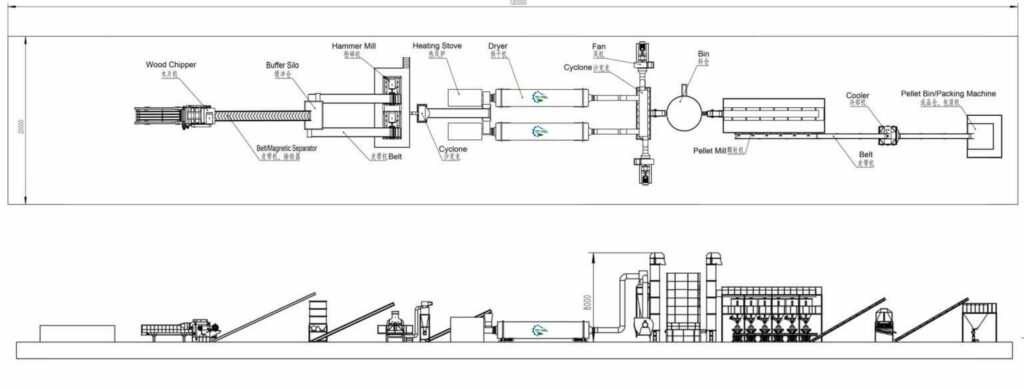
Máquinas relacionadas con la línea de producción de pellets
Procesamiento de materiales de gran tamaño en virutas más pequeñas, 3-5 cm de longitud y anchura, 10 mm de espesor.
A continuación, se tritura el material astillado para obtener serrín de menor tamaño (3-5 mm).
Secado del serrín hasta el contenido de humedad estándar 15%, preparado para la siguiente sección de peletización.
Peletización del serrín seco en pellets. La capacidad de la máquina puede alcanzar las 3t/h.
Enfriamiento de los pellets calientes a temperatura estándar, 30-40° caliente normal.
Envasado de los gránulos en sacos, pequeños de 50 kg o grandes.
Preguntas frecuentes sobre la línea de producción de pellets
Somos fabricante de la maquinaria de la pelotilla desde el año 2004, podemos ofrecer la maquinaria completa de la producción de la pelotilla basada en su requisito. Fábrica de aterrizaje tamaño 40000㎡ y 350 + personal de trabajo. Y más de 1000 clientes satisfechos nacionales y extranjeros. Tenemos un equipo separado para organizar las ventas y servicio post-venta.
Para poder atenderle mejor, le rogamos que nos facilite la siguiente información:
1) ¿Cuál es el material para fabricar pellets? Mejor si nos puede compartir algunas fotos
2) ¿Dureza del material?
3) ¿Contenido de humedad?
4) ¿Diámetro máximo del material a procesar?
5)La capacidad por hora que desea obtener para la producción de pellets.
A continuación, le recomendaremos el modelo adecuado en función de sus necesidades reales.
El proceso de cooperación es el siguiente :
1. Negación
Vamos a negociar con usted acerca de su requisito, incluyendo lo que es su material para la fabricación de pellets, ... ¿cuánto contenido de humedad? ¿cuánta capacidad por hora? presupuesto para el proyecto? planta de aterrizaje tamaño disponible, etc. En base a ellos vamos a personalizar la solución con nuestra experiencia y presentar a usted.
2. Confirmación del pedido
Tras concluir la solución de la línea de producción y el presupuesto, firmaremos el contrato y procederemos al pago. Aceptamos 30%T/T después de confirmar el pedido, y 70%T/T de saldo antes del envío.
3. Proceso de fabricación
Después de recibir su pago de depósito, vamos a organizar la producción en consecuencia, sobre la base de diferentes capacidades, nuestro tiempo de fabricación son diferentes. Normalmente necesitamos 30-45 días para toda la línea de capacidad inferior a 5t/h, y 45-60 días para la capacidad superior a 5t/h. Para un solo conjunto de la máquina necesita alrededor de 25-30days sobre la base de nuestro plan de fabricación.
4. Puesta en marcha y entrega de la máquina
Después de que todas las máquinas terminaron la fabricación, vamos a probar y ejecutar todas las máquinas antes de la entrega, asegúrese de que la máquina puede lograr el mejor rendimiento antes de la entrega, durante ese tiempo vamos a enviar a los clientes los videos de prueba para la confirmación
5. 5. Pago del saldo y organización de la entrega
Después de que el cliente acepte el funcionamiento de las máquinas, el cliente debe arreglar el pago del balance a nosotros, después de que consigamos el balance, arreglaremos reservar la nave y arreglar la entrega para los clientes. Todas las máquinas serán embaladas bien para el envío de larga distancia.
6. Entrega de documentos aduaneros
Después de que todas las máquinas arreglado aduanas en China, vamos a enviar todos los documentos a los clientes, incluyendo el conocimiento de embarque, factura, lista de empaque, país de Orign etc. Vamos a ayudar a los clientes en el despacho de aduana sin problemas.
Nuestra máquina de pellets puede procesar diversos materiales procedentes de residuos forestales y agrícolas. Por ejemplo, troncos de madera, ramas, astillas de madera, hojas de árboles, tocón de tronco, muebles de desecho, serrín, setas, cáscara de arroz, paja de arroz, tallo de maíz, cáscara de maní, EFB, bambú, etc. Tenemos diferentes máquinas y especificaciones que pueden satisfacer sus diversos requisitos de producción de materiales, puede ponerse en contacto con su equipo de expertos para saber más.
Para hacer pellets, debemos controlar el serrín que entra en el molino de pellets contenido de humedad 10-15%, demasiado húmedo o demasiado seco afectará el resultado de granulación. Si el material es demasiado húmedo, necesita una máquina secadora para eliminar la humedad.
Nuestra garantía para la maquinaria de producción de pellets es de un año después de la venta, sin incluir las piezas de desgaste. Las principales piezas de desgaste son la matriz de anillo y el rodillo.
Debido a COVID-19 desde 2020, no podemos enviar a nuestros ingenieros al extranjero para la instalación in situ, podemos ofrecer la instalación de ayuda de vídeo después de que el cliente reciba las máquinas. Antes de la entrega, también vamos a probar todas las máquinas para asegurarse de que puede achive mejor rendimiento, y vamos a hacer un video detallado para mostrar a los clientes cómo instalarlos, y el manual de instalación se enviará junto con la máquina. Nuestro servicio post-venta estará listo 24 horas para apoyar a los clientes durante todo el proceso de instalación.

